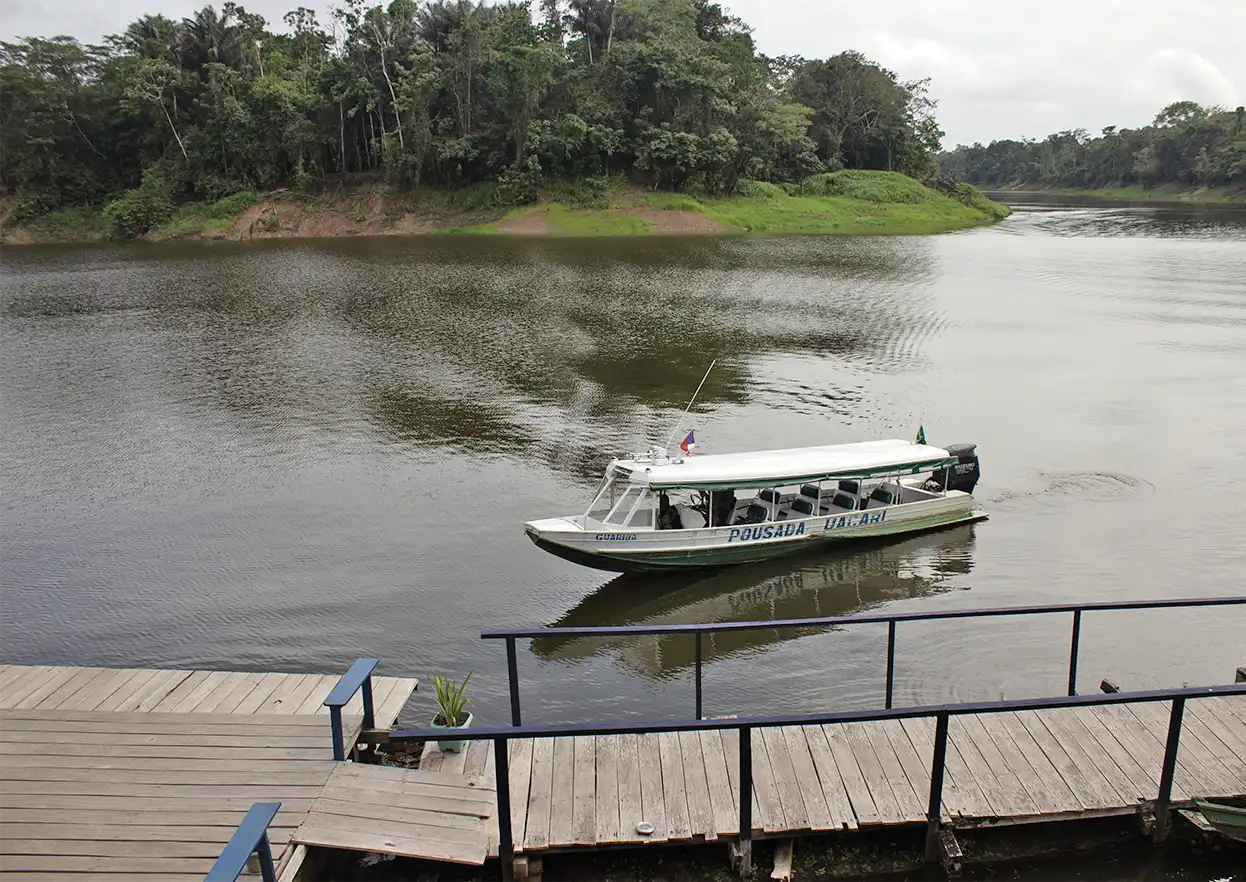Arapaima are the largest scaled freshwater fish in the world, reaching lengths of up to 9 feet long and weighting up to 440 pounds.
Arapaima are an air-breathing fish, resembling tarpon in both size and shape, though with more coloration and distinctly prehistoric fins. They have a wide, scaly, gray-hued body and a tapered head, often with deep red coloration along their fins. Arapaima can stay underwater for long periods of time (up to 20 minutes), but they tend to hold closer to the water’s surface where they can hunt smaller fish. When hooked, they are acrobatic fighters, leaping repeatedly out of the water.
While fishing for a true river monster is appealing for a lot of adventure anglers, Pirarucú has much more to offer than just big fish. In our 2015 exploratory season we did land giant arapaima of up to 150 kilos (330 pounds!), we also discovered several other remarkable, unique, and exhilarating fisheries here in the Mamirauá Reserve. In addition to the large fish, we found vibrant populations of “juvenile” arapaima from 20-60 pounds, which readily take large streamers on floating fly lines in the shallow lagoons of the reserve. There are also many arowana, a fish popular in aquariums in the US but that average 2-8 pounds in the wild and attack poppers and terrestrials with reckless abandon, instantly leaping acrobatically high into the air once hooked. And one can’t pass by the schools, singles, and pairs of cruising tambaqui often sighted along the banks, fish that resemble freshwater permit in size, shape, and their hard-pulling nature on the end of a fly line. Throw in potential for yellow peacock bass, piripitinga, red-bellied piranhas, and oscars, and you have the recipe for an incredibly diverse fishery that will not disappoint any jungle angler.
The unique fishery at Pirarucú is certainly the primary draw to the region; once settled into your floating cabin at the Pousada Uacari, however, you’ll quickly be amazed at the incredible nature of the place itself. The floating lodge is perched in a bend of the channel that connects the series of lakes and lagoons to the junction of the Solimões (Upper Amazon) and Japura Rivers. You’ll be immersed in jungle, surrounded by the sights and sounds of massive arapaima rolling and splashing in all directions (and at times literally right beneath the floor of your cabin!) As a bonus, the Mamirauá Reserve is one of the top bird-watching destinations in the world, and every day you’ll see countless species of birds along the banks and within the dense jungle.

Headed out on your next adventure with us? The Fly ShopⓇ has you covered. As a thank you to our travel guests, enjoy 15% off all retail purchases for a year! — the perfect chance to gear up before your trip.
Whether it’s flies, leaders, apparel or a new rod and reel outfit, we’ve got everything you need to make your journey more comfortable, more successful, and more fun. (some exclusions apply)















